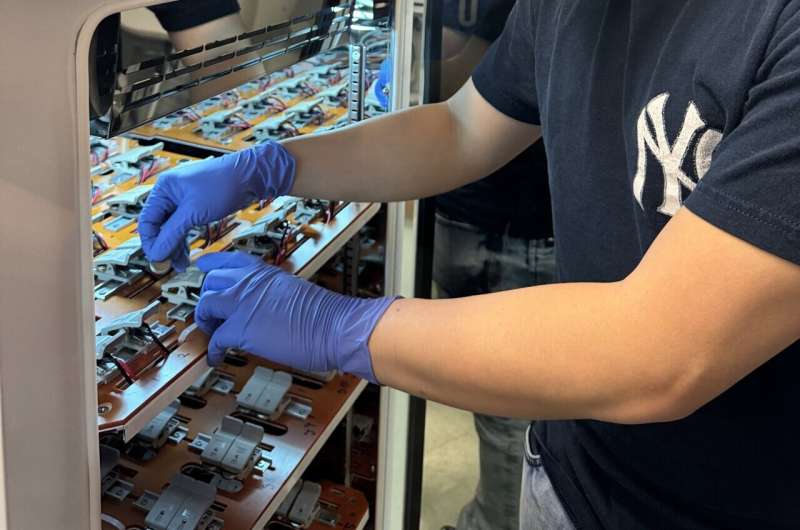Battery breakthrough could usher in greener, cheaper electric vehicles
The global shift to electric vehicles is gaining momentum, yet the extraction of battery materials has a significant environmental footprint that comes with high costs.
Now, two studies led by McGill University researchers offer hope in the search to manufacture cheaper and greener lithium-ion batteries used in electric vehicles (EVs).
Their findings unlock the potential to produce batteries using more sustainable and less costly metals, known as disordered rock-salt-type (DRX) cathode materials.
In the first study, engineering researchers including lead author Richie Fong, a Ph.D. student in Materials Engineering, focused on cathodes. The costliest component of batteries, cathodes are traditionally made from unsustainable metals like cobalt and nickel. Iron could be the cheapest alternative, but until now, existing iron-based cathodes have lacked sufficient storage capacity to power a long-range EV.
The findings published in Advanced Energy Materials decisively challenge this perception. The researchers successfully engineered iron-based DRX cathodes by modifying the electron storage process, achieving some of the highest storage capacity ever recorded for iron-based cathode materials. The breakthrough could slash lithium-ion battery costs by 20%.
In a second study, published in Energy & Environmental Science, a team led by Prof. Jinhyuk Lee, an Assistant Professor in the Department of Mining and Materials Engineering and a William Dawson Scholar, unlocked the potential of another sustainable alternative: manganese-based disordered rock-salts (Mn-DRX). This material offers high energy content at a low cost, but its practical application has been hindered by low electrical conductivity and structural instability.
In collaboration with scientists from the Korea Advanced Institute of Science and Technology, they discovered a novel solution. Using multiwalled carbon nanotubes and an adhesive binder as electrode additives, they achieved the highest practical-level energy density ever recorded for Mn-DRX cathodes.
“Our findings hold immense promise for the future of lithium-ion battery development, offering a pathway towards more affordable and sustainable energy storage solutions,” explains Lee, adding that an industry partner is already working alongside the researchers to bring these innovations to market.
More information:
Richie Fong et al, Redox Engineering of Fe‐Rich Disordered Rock‐Salt Li‐Ion Cathode Materials, Advanced Energy Materials (2024). DOI: 10.1002/aenm.202400402
Eunryeol Lee et al, Nearly all-active-material cathodes free of nickel and cobalt for Li-ion batteries, Energy & Environmental Science (2024). DOI: 10.1039/D4EE00551A
McGill University
Citation:
Battery breakthrough could usher in greener, cheaper electric vehicles (2024, May 28)
retrieved 29 May 2024
from https://techxplore.com/news/2024-05-battery-breakthrough-usher-greener-cheaper.html
This document is subject to copyright. Apart from any fair dealing for the purpose of private study or research, no
part may be reproduced without the written permission. The content is provided for information purposes only.

Comments are closed